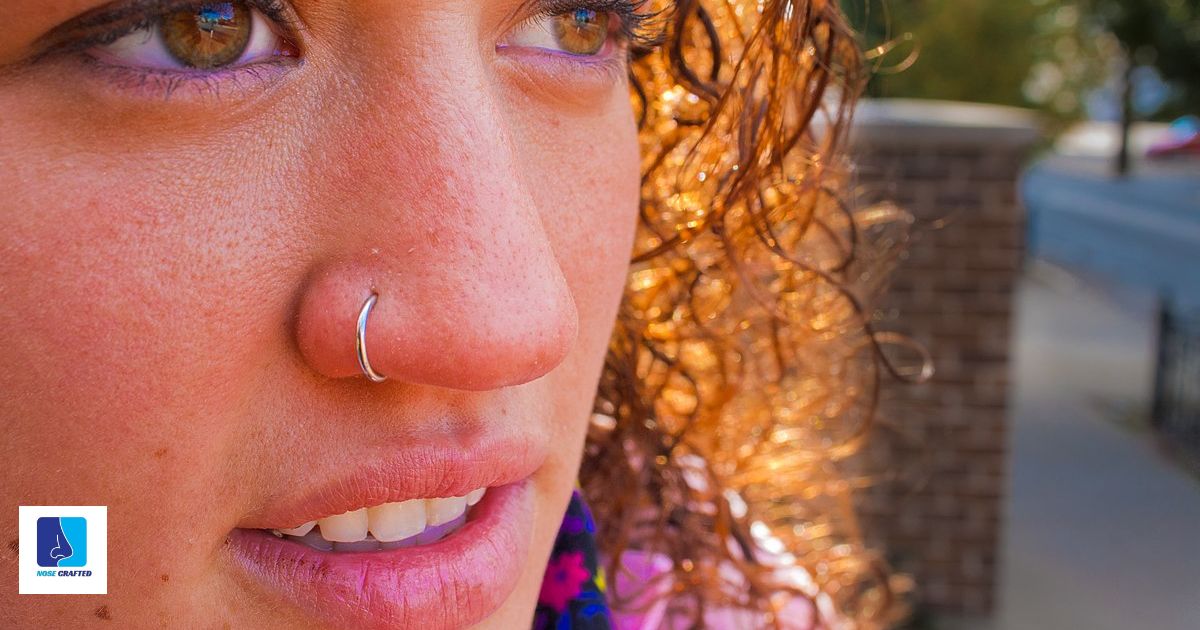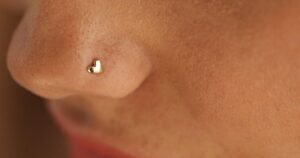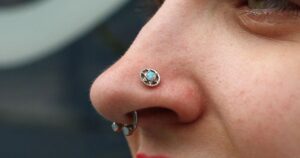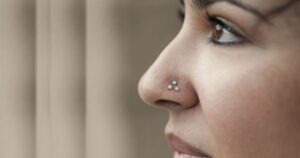Nose piercing is a form of body modification where a hole is created through the skin and cartilage of the nose. It’s often adorned with jewelry like studs or rings. It’s a cultural practice with roots in various traditions around the world. Nose piercing has gained popularity as a fashion statement and a means of self-expression in contemporary society.
Want to take a refreshing dip after getting your nose pierced? Wondering, “How long to wait to swim after nose piercing?” Dive into this quick guide and make sure you’re taking the right steps to keep your new piercing safe and sound.
After getting a nose piercing, it’s important to wait before swimming. The general recommendation is to avoid swimming for at least 4 to 6 weeks. This allows the piercing to heal properly and reduces the risk of infection. It’s best to consult with your piercer for specific advice tailored to your situation.
The Healing Process

During the healing process of a nose piercing, your body undergoes a series of steps to repair the pierced area. Initially, there may be some swelling, tenderness, and discharge as the body’s immune system kicks in to protect and heal the wound. It’s essential to keep the piercing clean and follow proper aftercare instructions provided by your piercer to facilitate smooth healing and minimize the risk of infection.
As time progresses, the swelling should gradually decrease, and the area will start to feel less sensitive. However, it’s important to note that complete healing can take several weeks to months, depending on individual factors such as overall health, aftercare regimen, and the location of the piercing. Being patient and diligent with your aftercare routine will help ensure a successful healing process and a beautiful, healed nose piercing.
Initial Stages of Healing
During the initial stages of healing after a nose piercing, the body begins its natural process of repairing the pierced area. Initially, there may be some swelling, redness, and tenderness around the piercing site. This is normal as the body reacts to the trauma of piercing. The formation of a crust around the piercing is also common as part of the healing process. It’s essential to keep the area clean and follow proper aftercare instructions provided by your piercer to promote healthy healing and minimize the risk of infection.
Factors Affecting Healing Time
Several factors influence the healing time of a nose piercing. Firstly, individual differences such as age, overall health, and immune system strength play a significant role. Additionally, the location of the piercing within the nose, as well as the size and type of jewelry used, can affect healing. Lifestyle factors like smoking or excessive alcohol consumption may delay healing. Proper aftercare, including cleaning the piercing regularly and avoiding trauma, also impacts the healing process. Overall, a combination of these factors determines how quickly or slowly a nose piercing heals.
How Long After A Nose Piercing Can You Swim In The Ocean
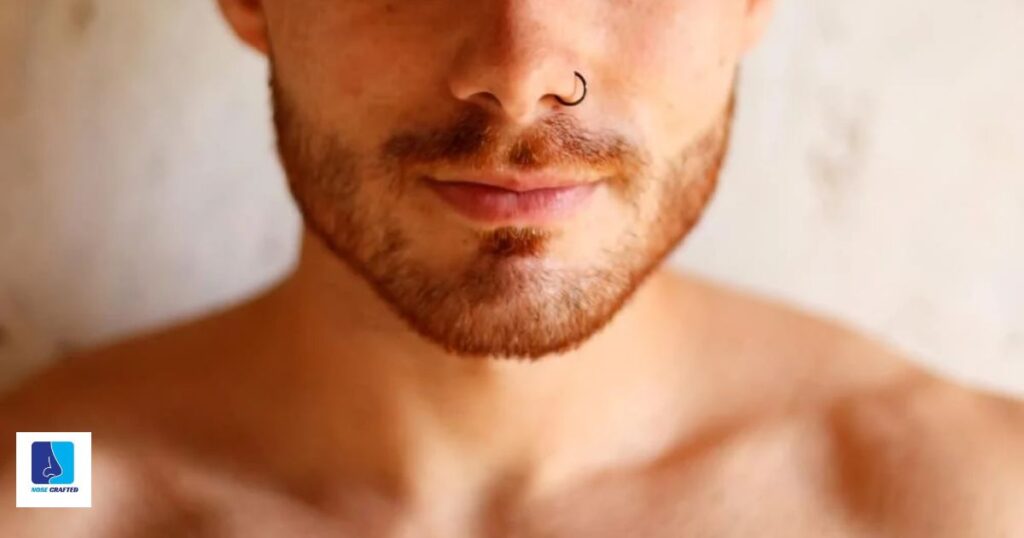
Sure, here’s a simple table outlining the recommended wait time before swimming in the ocean after getting a nose piercing:
| Time After Piercing | Recommended Wait Time |
| 0-2 weeks | Avoid swimming |
| 2-4 weeks | Avoid swimming |
| 4-6 weeks | Avoid swimming |
| 6-8 weeks | Proceed with caution |
| 8+ weeks | Generally safe to swim |
Please note that these are general guidelines and it’s always best to consult with your piercer for personalized advice based on your healing progress.
Can I Swim A Month After Getting My Nose Pierced
After getting your nose pierced, it’s crucial to allow ample time for proper healing before swimming. Typically, experts recommend waiting at least four to six weeks before taking a dip in the pool or ocean. Swimming too soon can increase the risk of infection and interfere with the healing process of your piercing. It’s essential to prioritize your health and follow the advice of your piercer to ensure your nose piercing heals correctly.
However, everyone’s healing process may vary slightly, so it’s wise to consult with your piercer for personalized advice, especially after a nose piercing. They can assess your piercing’s condition and provide guidance tailored to your specific situation. Remember, patience is key when it comes to caring for your new nose piercing, so wait until you receive the green light before diving back into the water.
Swimming 2 Weeks After Nose Piercing
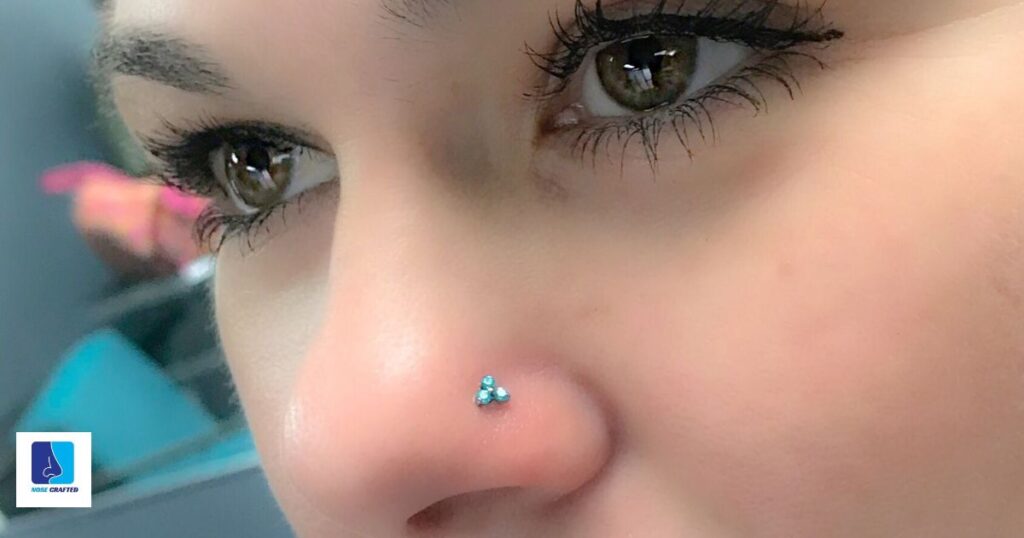
Swimming just two weeks after getting a nose piercing can pose significant risks to your healing process. At this stage, the piercing is still in its early stages of healing, and exposing it to chlorine, saltwater, or other pool contaminants can increase the likelihood of infection. Additionally, the pressure and movement of water against the piercing site can cause irritation and disrupt the healing tissue. It’s crucial to follow the recommended healing timeline and avoid swimming until your piercer gives you the green light.
Allowing your nose piercing the necessary time to heal properly is essential for minimizing complications and ensuring a successful outcome. While it may be tempting to take a dip in the pool, it’s important to prioritize your health and adhere to the aftercare instructions provided by your piercer. By patiently waiting for the recommended healing period to pass before swimming, you’ll help promote a smooth and trouble-free recovery for your new piercing.
How Long After Nose Piercing Can You Change To Hoop
After getting a nose piercing, it’s important to wait before switching to a hoop. Typically, you should wait until the piercing has fully healed, which usually takes about 6 to 8 weeks. During this time, it’s crucial to follow proper aftercare instructions to minimize the risk of infection or irritation. Once the piercing has healed, you can consult with your piercer to determine if it’s safe to change to a hoop, ensuring a smooth transition and maintaining the health of your piercing.
How To Cover Nose Piercing For Swimming
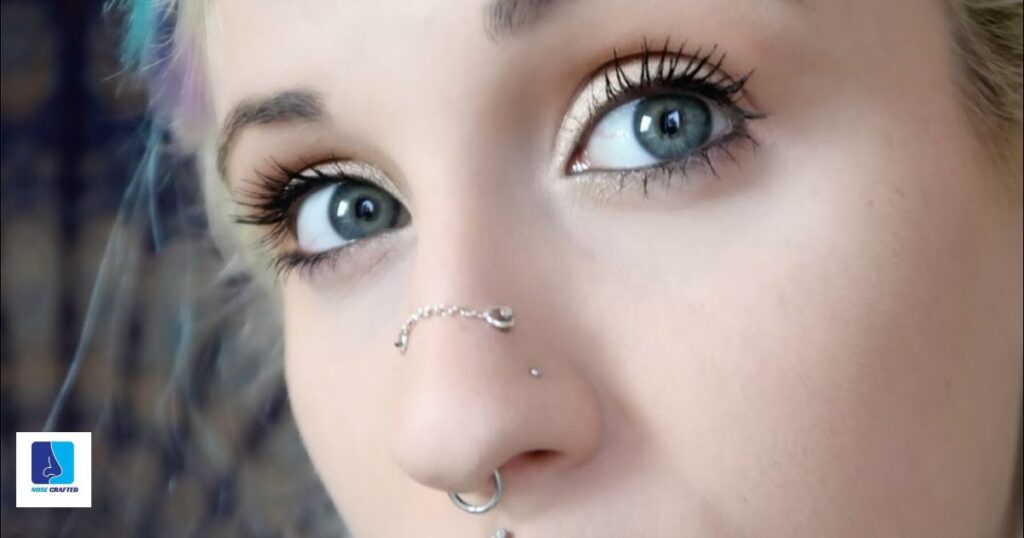
Covering your nose piercing while swimming is crucial to protect it from potential irritants and infections. One simple method is to use a waterproof adhesive bandage, ensuring it completely covers the piercing. Alternatively, a nasal plug or a small piece of sterile gauze secured with medical tape can provide adequate protection. Remember to replace the covering if it becomes loose or wet during swimming to maintain cleanliness and prevent irritation.
Additionally, wearing a snug-fitting swim cap can help shield your nose piercing from direct contact with water. Avoid submerging your head underwater if possible, and opt for gentler activities like floating or leisurely swimming until your piercing fully heals. Always follow your piercer’s aftercare instructions and consult them for specific recommendations tailored to your individual healing process.
How Long To Wait To Swim After Ear Piercing
After getting your ears pierced, it’s crucial to wait before taking a plunge into the pool. Generally, experts recommend waiting at least 4 to 6 weeks before swimming after an ear piercing. This waiting period allows the piercing to heal properly and reduces the risk of infection or complications. It’s essential to follow this advice and prioritize the health and safety of your newly pierced ears.
FAQ,s
When can I swim after ear piercing?
Wait at least 4 to 6 weeks after ear piercing before swimming.
How long do ear piercings take to heal?
Ear piercings typically take about 6 to 8 weeks to heal fully.
Can I shower after piercing my ears?
Yes, you can shower after piercing your ears, but be sure to avoid getting the piercing site directly wet, and gently clean around the area with mild soap and water.
What should you avoid after ear piercing?
After ear piercing, it’s best to avoid touching or twisting the earrings to prevent irritation and infection.
Conclusion
In conclusion, whether it’s a nose or ear piercing, proper care and patience are paramount for a successful healing process. Remembering to avoid swimming for the recommended 4 to 6 weeks after piercing is crucial to prevent infections and complications. Additionally, following aftercare instructions diligently, such as avoiding touching the piercing unnecessarily and keeping it clean, will contribute to a smoother healing journey. By prioritizing caution and adhering to professional advice, individuals can ensure their piercings heal well, allowing them to enjoy their new adornments for years to come.
